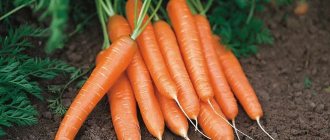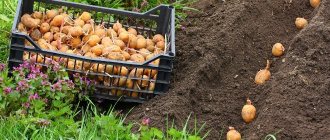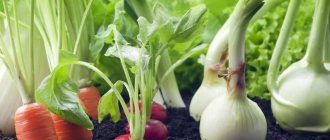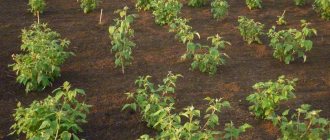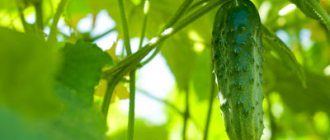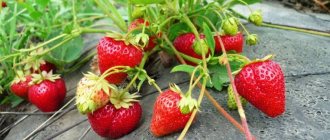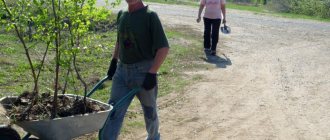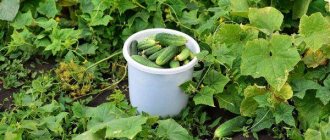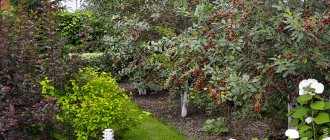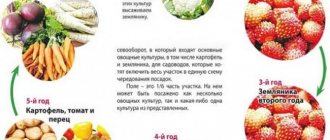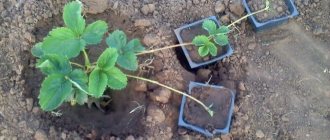Alternation of crops: why is it needed?
Normal microflora is the key to good harvests. But it is impossible to maintain it if crop rotation is disrupted. If you do not alternate crops, you cannot maintain soil fertility. The bottom line is that each plant requires a certain composition and reacts in its own way to density, acidity and other soil qualities. A certain plant is tolerant in its own way to certain harmful organisms.
After three years, it’s time to disturb the strawberry bed
Failure to alternate plantings will inevitably provoke depletion of the soil, proliferation of pests and the spread of pathogens. As a rule, all cultivated plants, including strawberries, suffer from errors in crop rotation. Only legumes can grow in the same place for many years and always give a good harvest, which is due to their feature - the accumulation of nitrogen at the tips of the roots.
What is the best time to plant strawberries?
Green manure plants are considered the best predecessors for strawberries. They help prepare the soil for growing this demanding berry. As green manure, you can sow oilseed radish, buckwheat, vetch, phacelia, oats, lupine or mustard in the garden bed. During the season, the plants are mowed several times and left untouched directly in the garden bed. After processing by worms and beneficial bacteria, the mowed plant mass turns into humus, thereby enriching the soil.
Lupine and vetch add nitrogen to the soil, mustard saturates it with phosphorus, and buckwheat leaves behind potassium. In the southern regions, green manure can be sown in the fall, before growing, for example, potatoes. In this case, by spring you will have a bed quite suitable for growing strawberries.
Some owners of summer cottages consider it wasteful not to use the land for planting vegetables for at least one season, so they refuse to grow green manure.
What is recommended to plant in this case?
- Good predecessors for strawberries are green beans and peas. You can also grow beans and beans, but they do not ripen in all regions.
- Onions and garlic will also contribute to the successful cultivation of strawberries after themselves. Moreover, they cleanse the soil well of harmful microorganisms and insects.
- A good predecessor to strawberries will be greens. Plant dill, parsley, celery, spinach and various types of lettuce from the previous season.
- In front of the strawberries, you can plant carrots, radishes and corn in the garden bed. These crops will give an excellent harvest and will not devastate the soil too much.
If you plan to plant strawberries in the fall, before planting, the bed must be thoroughly cleaned of plant debris (an exception is made for legumes, the stems of which are crushed and dug up along with the ground). Then the bed is dug deeply and organic fertilizers are added to the soil. After the soil settles, you can plant strawberry seedlings. Usually, all preparation takes no more than 2 weeks.
Maybe after potatoes?
In the fall, it is not recommended to plant strawberry seedlings immediately after potatoes. Potatoes belong to the nightshade family, which shares common pests and diseases with strawberries.
If the plot is small and you want to manage it rationally, then the solution would be to sow clover or mustard after the potatoes. Before frost, these green manures will have time to sprout, after which they are dug up with soil, covered with film and left until spring. Therefore, it will not be possible to plant strawberries immediately after potatoes in the fall. But in the spring the garden bed will be quite suitable for growing berries.
When can you start planting crops after strawberries?
Strawberries require careful attention to themselves. Only with regular care does it produce abundant harvests. Proper agricultural technology for growing a berry garden also involves timely replanting. Strawberries are able to bear fruit without loss of varietal qualities (yield, fruit size) for 4-5 seasons.
If you give the land time to rest, the harvests will be abundant. For this purpose, a steam field is organized. The soil is treated with herbicides against weeds, and nutritional complexes are laid. Nothing is grown on the plot for the entire next season. During this time, humus is mineralized and nutrients become available for absorption by plants. But if necessary, you can plant other crops right away.
What can be planted in the beds after strawberries?
An important question for gardeners is what crops are allowed to be planted after strawberries. Experts say that it is best to sow root crops in such beds. The best option is carrots . Greens, onions, cabbage or leafy vegetables and legumes will feel great .
The best crop to plant after strawberries is carrots.
Carrots do not suffer from the diseases inherent in strawberries.
It is also not afraid of dangerous pests that have a detrimental effect on berry bushes. This is due to the fact that the roots of such crops can absorb nitrogen from the air.
It turns out that they do not “pull” the component important for their development from the soil. In addition, legumes take part in saturating the soil with useful elements . By planting such plants after strawberries, you will not only get a good harvest on weak soil, but also prepare a bed for growing other plants.
There is an opinion that cucumbers, melons, zucchini and other melon varieties grow well on former strawberry plantings. Such crop rotation is possible if the land is pre-cultivated and fertilizer compounds are added to it.
garlic in the first season after strawberries , which has antifungal and antimicrobial properties and repels harmful parasites. The row spaces are used for celery and parsley, which repel slugs - frequent inhabitants of strawberry beds.
In the first season after strawberries, it is recommended to plant garlic.
It has been proven in practice that the quality of the soil after its predecessor can be improved by planting certain types of flowers on the site. These could be tulips, peonies, garden violets . And if there are opportunities and sufficient garden space, plant flower beds in such a place.
What should you plant?
There is a list of crops that should be planted after strawberries. Even when planted the next year, they will demonstrate high yields.
Technology for growing strawberries in open ground
- Legumes (peas, soybeans, beans). Strawberries remove nitrogen compounds from the soil. And these crops do not need it at all due to their ability to accumulate and release nitrogen from the incoming air. Nodule bacteria, which are located at the tips of the roots, are responsible for this. When sowing legumes after strawberries, within a year the soil will be well saturated with nitrogen.
- Root vegetables, leafy vegetables, melons. Thanks to their shallow root systems, they are not affected by the harmful organisms that attack strawberries. They can easily occupy the areas vacated by the berry garden, but only after digging up the earth and laying down mineral fertilizers and organic matter. After strawberries, onions or garlic are planted as plants that have a detrimental effect on fungal spores and other pathogenic organisms, disinfecting the soil.
- Green manure. Green manure crops are plants whose cultivation purpose is to improve the soil composition and soil structure. They also have a second name that fully corresponds to their purpose - green fertilizers. Lupine, mustard, phacelia, and alfalfa are sown immediately after processing the strawberry bed. Plants quickly build up vegetative mass - in mid-summer it is mowed down and embedded in the soil. This is the preparation of soil for the placement of other crops.
- Cereals (oats, rye). They can also act as green fertilizers and restore soil microflora. Oats are responsible for saturating the earth with potassium. Thanks to this, after a few years, tomatoes, peppers and eggplants will bear fruit perfectly in the place of the berry garden. If you sow rye after the strawberry bushes. It inhibits weeds, and soon specialized strawberry pests disappear. After a season, you can place vegetable beds with tomatoes and zucchini. If the earth has become more alkaline, you should give preference to buckwheat. The latter will increase acidity and enrich in phosphates.
- Flowers. In the place where the strawberries grew, a front garden is organized in the first year after transplantation. Planting bulbous plants (tulips, daffodils, crocuses) allows you to delight the eye with beautiful blooms next spring. Peonies and daffodils are good options. Their abundant flowering will impress.
Note: If you cultivate strawberries on your plot for a long time, you should not count on a rich harvest of vegetables in the near future.
Crop rotation rules
To get a good harvest every year, you should alternate plantings. When crop rotation for strawberries, follow these rules:
- Plants are alternated taking into account which part of them is used for cooking: it is recommended to plant greens or root crops on the plantation.
- You cannot alternate plants that belong to the same family (strawberries with raspberries, rose hips or wild strawberries).
- The next plants should be those that are able to restore the balance of nitrogen in the soil.
- This red berry has a deep root system, so grow plants with shallow root systems instead.
Related article:
6 things to do at the dacha that you definitely need to do in July
For which plants is strawberry a bad predecessor?
The following plants should not be grown in strawberry beds:
- raspberries;
- hawthorn;
- rose hip;
- Rowan.
Raspberries are susceptible to the same diseases as strawberries. And depleted soil will not be able to ensure normal rooting of seedlings and ensure full growth. Potatoes and tomatoes suffer from diseases similar to strawberries.
Planting these plants after the berry garden will not bring results.
| What can you plant? | What not to plant |
| Turnips, radishes, beans, peas, lentils, cucumbers, pumpkin, zucchini, garlic, onions, bulbous flowers. | Rose hips, raspberries, hawthorns, tomatoes. |
Important! Plants of the Rosaceae family cannot be planted after strawberries.
Why can’t you plant strawberries?
There are also undesirable precursors for strawberries. As already mentioned, it is not planted after potatoes and other vegetables that belong to the nightshade family.
- These are crops such as peppers, tomatoes, eggplants. The pests left behind by the berries will also enjoy these vegetables.
- Raspberries. This bush produces tenacious shoots, which will have to be fought for several years in a row after the bushes are uprooted. Therefore, strawberries simply cannot grow normally in this place. Both berries also have a common pest - the strawberry-raspberry weevil. These crops should not be planted next to each other or one after another.
- Sunflower and Jerusalem artichoke, which during cultivation completely emasculate the soil, depriving it of all nutrients. Strawberries love fertile soil, so they will not produce a normal harvest after these crops.
- Precursors such as zucchini, cucumbers and cabbage are also not suitable for strawberries. These vegetables take from the soil the same nutrients that garden strawberries need.
- Plants belonging to the buttercup family are not recommended to be grown in the garden bed in front of the strawberries. These flowers secrete biologically active substances that have a depressing effect on strawberry seedlings and prevent them from developing normally.
- The same can be said about fennel, which is often mistakenly recommended to be grown as a predecessor to strawberries. It is an allelopathic crop that is unfriendly to all other plants. You can not only get a meager harvest of berries, but also lose seedlings altogether.
But strawberries themselves can be an unfavorable predecessor for other crops. This also has to be taken into account when conducting crop rotation.
Adviсe
Tip 1
In the garden bed where the strawberries grew, it is recommended to create a fallow field - a field free from cultivated crops. The soil is cleared of weeds, dug up and fertilized. In the spring, this field can be sown with grain, and in mid-summer it can be dug up along with the grown grass. The soil will be saturated with nitrogen, and humus will form in it.
Tip 2
Experienced gardeners often plant carrots after strawberries. The fact is that nematodes remain in the soil after strawberries, which are not harmful to carrots.
Tilling the soil after harvesting strawberries
Compliance with the rules of crop rotation allows you to get a good harvest of vegetables and berries using a minimum amount of chemical fertilizers. It is especially important to follow these rules for crops that grow in one area for several years. During growth, strawberries deplete the soil and change the structure and density of the soil for the worse. After long-term cultivation of a crop, the site may become infected with various diseases and pests. To improve the soil health, the following measures must be taken:
- remove old strawberry bushes from the area. It is recommended to burn them so that the bacteria that have accumulated on the plants do not cause infection of other garden crops;
- thoroughly weed the area, removing all weed roots from the ground;
- dig up the bed with one and a half to two shovels;
- When digging, add rotted or semi-rotted manure at the rate of 5 kg per 1 sq. m. m beds;
- treat the soil with working solutions of biological preparations (Baikal EM-1, Baikal EM-5) or a 3% solution of Bordeaux mixture.
For one year, a dug up and fertilized bed can be left unsown, maintaining loose soil throughout the season and removing weeds. During the rest period (staying “fallow”), nutrients will accumulate in the soil, its structure will be restored and improved.
Surface composting
In order not to dig up or clear the harvested strawberry beds of weeds, you can use the method of surface composting. In this case, all work is carried out not in the fall, but immediately after the end of the fruiting period:
- Bushes and weeds are not removed from the beds, but crushed. The soil is not dug up, but covered with a layer of newspapers and cardboard.
- A layer of plant residues (mown grass, fallen leaves, tops) mixed with rotted manure is poured on top of the paper.
- The area is watered with a working solution of microbiological fertilizer Baikal EM-1 or Vozrozhdenie.
- The bed must be covered with black plastic film.
In a few warm months, organic residues will turn into nutritious humus, and old strawberry bushes and weeds will burn and die without access to light.
In the spring, when planting plants, there is no need to remove the film from the area; holes are cut in it, into which prepared seedlings of pumpkin, zucchini and other crops recommended below are planted
Answers to frequently asked questions
How often do you need to replant strawberries to a new location? It is recommended to replant strawberries every 3-4 years. It is during these years that it bears fruit best, then the yield begins to decline, the berries become smaller and become less sweet. Having seen such signs of degeneration, you need to consider a transplant.
When can you plant strawberries in their old place? Planting strawberries in the same area is possible only after 5 years. This time will be enough to restore fertility and the required soil balance.
After what should you plant strawberry bushes?
The berry feels quite comfortable, grows well and fully develops after many vegetable crops. Keep in mind that crop rotation is very important, but you will still have to adapt the bed for planting.
Garden strawberries grow well after legumes. This option is considered preferable if it is planned to form beds in the fall, because the crop from the predecessor crop is harvested in the summer, so the soil will not stand idle. Strawberries can be planted after any greens (including mint), radishes, carrots, garlic or onions.
Why is crop rotation needed?
The strawberry bed produces its maximum yield 2-3 years after planting. You can achieve a good harvest even at 4, if after fruiting you remove all the tendrils discarded by the strawberry bushes, and also feed the strawberry bed correctly and on time. This requires some experience, a lot of time and effort, and as a result, the strawberries still need to be replanted.
The reason is that a strawberry bed greatly depletes the soil. In addition, like any crop, strawberries are capable of accumulating harmful bacteria, fungi and other pathogens in the soil over time. All taken together causes a sharp decline in yield.
To obtain consistently high yields of both strawberries and other crops, you need to adhere to crop rotation - alternating different crops on a plot of land in a certain order. Each of the planted crops takes the nutrients and microelements it needs from the soil, leaving those not needed untouched.
If you plant crops in the right order, you can significantly increase their yield - this is the essence of crop rotation. Crop rotation is considered scientifically justified when crops of the same type return to their original place after 6 (six-field) or 10 (ten-field) years. The problem is that organizing such a complete crop rotation on a plot of 10-15 acres, if 1.5-2 dozen crops are grown on it, is not so easy.
But if it is impossible to organize a scientifically based crop rotation, then you can use centuries-old folk experience and alternate the crops grown in your garden, following a simple rule: do not plant crops with the same productive area after each other. For example, you cannot plant root crops after root crops, fruit crops after fruit crops, deciduous crops after deciduous crops, etc.
What to plant after strawberries next year in open ground
It is not profitable for a gardener to violate the rules of crop rotation; this will not have the best effect on the yield and quality of fruits. If you do not change the crops on the plot, but plant the same vegetables and berries from year to year, this will lead to negative consequences:
- a surge in diseases;
- depletion of the earth;
- accumulation of pests and their larvae in the soil.
Experts say that if proper crop rotation is observed, crop yields increase by 30%. It is permissible to grow strawberries in the same place for 3-4 years, after which it is necessary to give the bed to a new crop.
To restore the soil
The berry can be a good precursor for all legumes (beans, peas, lentils, beans). These plants do not need nitrogen, which strawberries completely extract from the soil. They absorb oxygen from the above-ground part and then transfer it to the root system. Legumes remarkably enrich the soil with minerals and save any depleted soil, while giving an excellent harvest.
Green manure can be planted not only before strawberries, but also after. They will give the earth rest, improve its structure and nutritional value. The following are sown as green manure plants: alfalfa, mustard, rapeseed, rye, mustard, clover. At the beginning of July, the crop is plowed into the ground, having previously crushed the green mass. If you have enough acres to grow vegetables, you can sow the bed after the strawberries with flowers. Tulips, peonies and garden violets are best suited.
Crop rotation
Experts say that it is best to plant carrots after berries. Strawberries leave behind nematodes in the soil. This pest is not terrible for carrots. In addition, the following can be grown in a berry patch:
- various types of cabbage,
- leaf salads,
- greenery.
Planted onions and garlic will disinfect the soil well after strawberries, and they will also repel parasites. Experienced gardeners claim that cucumbers grow well in the garden after strawberries. A worthy successor to strawberries can be melons. Before planting them, the soil must be fed and loosened properly.
On a note! It is recommended to return strawberries to their original planting location no earlier than after 6-7 years.
Grass crop rotation for strawberries
To organize strawberry crop rotation on your site, use the experience of dividing the occupied area into 6 parts. Occupy one of them annually with green manure plants. Vetch is especially effective:
- Apply organic fertilizer in spring;
- dig deeply into the selected part of the earth;
- level the area;
- sow green manure approximately 5 cm deep in a ratio of 17 g/1 sq. m;
- in the summer, as soon as the plant blooms, mow it;
- leave to dry on the ground for several days, then dig into the ground;
- Level the area again and sow winter rye at a rate of 13 g/1 sq. m;
- in November, mow the rye and thoroughly dig up part of the site.
In spring, plant potatoes in the usual way. From the third season, strawberries can grow in this place. Two-year restoration allows you to occupy 4 of the 6 parts of the plot with strawberries, and grow useful and productive crops on the rest.
Strawberries in the garden require care. The correct agricultural technology for land restoration will help you always have a tasty berry harvest.
Dangerous predecessors of strawberries
- Common pests and diseases in strawberries and nightshade crops. That is, tomatoes, eggplants and peppers can be safely included in the list of crops after which strawberries should under no circumstances be planted.
- After the raspberry garden, it’s also not worth cultivating strawberry beds. The root shoots of the shrub will make themselves felt throughout the first year. The second reason is that the weevil, which was harming raspberries, will now feast on strawberries.
- It is not recommended to plant strawberries after sunflowers. It depletes the soil and cannot be avoided without the influence of green manure plants.
- Bad predecessors: fennel, cabbage, zucchini, cucumbers.
The best neighbors for strawberries, what to plant nearby
If the strawberries are not planted in a continuous carpet, it is quite possible to add useful “neighbors” to them in the garden. When the bushes grow in a checkerboard pattern, there is free space between them where you can plant lettuce and spinach. This technique will allow for more efficient use of land.
- If you use parsley instead of lettuce and spinach, strawberry bushes are guaranteed protection from slugs, which do not like aromatic greens.
- Onions and garlic planted between the bushes will protect the berries from nematodes, and they themselves will grow large heads, so the benefit from such a neighborhood will be mutual.
- Low-growing varieties of marigolds, which will not be able to shade the berry bushes, will also help rid strawberries of nematodes.
- Linear plantings of strawberries can be alternated with rows of carrots, radishes, radishes, beets, herbs, garlic and onions.
- Beans, peas and lentils are perfect neighbors.
On a note! Fennel, horseradish and wild strawberries are not suitable for proximity to strawberry bushes.
The proximity of strawberries to other crops
Having found out which crops can be planted after strawberries, the question arises: next to which crops can they be planted? After all, no one has canceled the rules of neighborhood in the garden:
- Crops that differ in watering frequency should not grow nearby.
- There should be no vegetables in the neighborhood that love the same nutritional elements as the berry.
- Neighboring crops should not have common pests and ailments.
- Strawberry beds can be compacted in the first two years. Root parsley and radishes are suitable. Radishes, beets and other root vegetables will grow well in neighboring beds.
- Strawberries feel good next to a flower garden where clematis, peonies, and marigolds grow. They attract bees, which will pollinate the plants, and also repel pests.
- The proximity of strawberries to lentils or beans will enrich the soil with nitrogen.
- If you plant a row of garlic in a bed of strawberries, you can be sure that it will kill the fungal spores. Onions planted nearby will promote rapid ripening of the berries.
CONCLUSION:
Unfortunately, not every plot can be allocated a plot for green manure for the season. But there are many crops that can be good predecessors for strawberries. In addition, this berry can also be grown in joint plantings with herbs and vegetables. Just remember who is a friend and who is an enemy to strawberries. Have a good harvest.
What garden crops can be planted after strawberries?
If you do not plan to leave a piece of land empty, it is important to choose crops for planting that will not easily grow and develop normally, but will also have a beneficial effect on restoring soil balance. When selecting, you need to consider the following:
- the selected crop must be resistant to strawberry diseases and pests;
- for active growth and development, it will need other (unlike garden strawberries) nutrients.
Green manure
The land will rest, its structure and nutritional value will improve if green manure crops are sown on the treated area:
- alfalfa;
- mustard;
- rapeseed;
- rye;
- clover;
- Shrovetide radish;
- vetch-oat mixture.
One of the best green manures will be lupine, which, in addition to enriching the soil, will help destroy wireworms
Legumes
In the first year after harvesting, it is recommended to plant strawberries on the plot
- beans;
- peas;
- beans;
- lentils
Legumes can not only consume nitrogen from the air, but also additionally enrich the soil with this element.
Peas, even on depleted soil, will give a good harvest, restore the mineral balance of the soil, and enrich it with useful substances
Planting root crops and bulbous crops
In one bed you can combine plantings of garlic and carrots or garlic and parsley
Pumpkin and melon crops
When a sufficient amount of fertilizer is applied, pumpkin crops (cucumbers, zucchini, pumpkins) can be placed on the site, and in the southern regions - melon crops (melons or watermelons). With good watering, you can get a bountiful harvest of these vegetables, and their large foliage will cover the soil and prevent weeds from growing.
Tall, large pumpkin leaves cut off access to light for weeds, and the powerful root system wins the fight for nutrients
